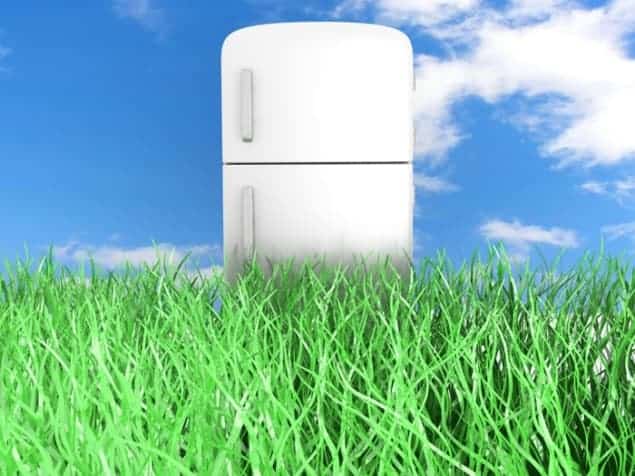
Researchers in Belgium have drawn up plans for an electronic “nanorefrigerator” device that is driven by high-energy photons, and so could potentially be directly powered by the Sun. The device consists of two electrodes, one of which is cooled by replacing hot electrons with cool ones via photon absorption. While this is definitely not the first system that applies the “cooling by heating” concept, it is the first that can be applied for a nanosized device, with no moving parts or electrical input, allowing a lower temperature to be achieved at the nanoscale.
Cooling with heat is not a new idea – the simplest description of the concept would be “sweating” or more scientifically evaporative cooling. While physicists have been using coherent laser light to cool gasses since the 1980s, a theoretical method for cooling a quantum system with noncoherent light, by using an “optomechanical device”, was proposed only last year.
Cool Sun
What Bart Cleuren and colleagues at Hasselt University, Belgium, have proposed is a rather simple solid-state device that would potentially use solar energy directly to cool. While that might not sound immediately impressive – many houses that run on solar energy have a refridgerator – what is new about this device is that it does not first convert solar energy into electricity. Rather, the device bypasses the need to generate another form of energy – which usually results in some amount of energy loss.
The electrode to be cooled is electrically connected to another electrode that is much warmer. Between the two electrodes are two quantum dots that act as a highway for electrons to shuffle along from one electrode to another. Quantum dots are tiny semiconductor structures where electrons are confined in all three dimensions. They have electronic and optical properties that can be controlled by adjusting the shape and size of the structures and have been studied intensively over the last two decades. In this work, the adjoining quantum dots each have a lower and higher energy level, such that each dot could hold an electron at any given time in one of the levels.
Electron hop
The researchers then suggest using high-temperature photons – solar radiation is generally at a temperature of about 5800 K – to make cold electrons flow from the warm electrode to the cool one, and vice versa for the warm electrons in the opposite direction.
To create this flow, a cold electron from the warm electrode would hop into the lower energy level of the first dot, where it must absorb a photon for it to jump to the lower energy level of the second dot. From there, the cold electron can make its bid for freedom to the cold electrode, where it would further decrease the temperature of that electrode. Hot electrons would make a similar trip in the opposite direction, hopping across the higher energy level of the dots instead. This net circulation of electrons would allow one of the electrodes to be efficiently cooled.
The researchers say that one can imagine that the electrons are “evaporating” out of the cold object and “condensing” in the warm object, somewhat like an absorption refrigerator. While the net heat flow for the device as it is currently described will probably be quite small, an array of dots could be placed in between the hot and cold objects to increase the heat exchange. The researchers also state in the paper that maximum efficiency might be reached by fine-tuning specific heat – exchange parameters of their system.
The research is published in Physical Review Letters.


